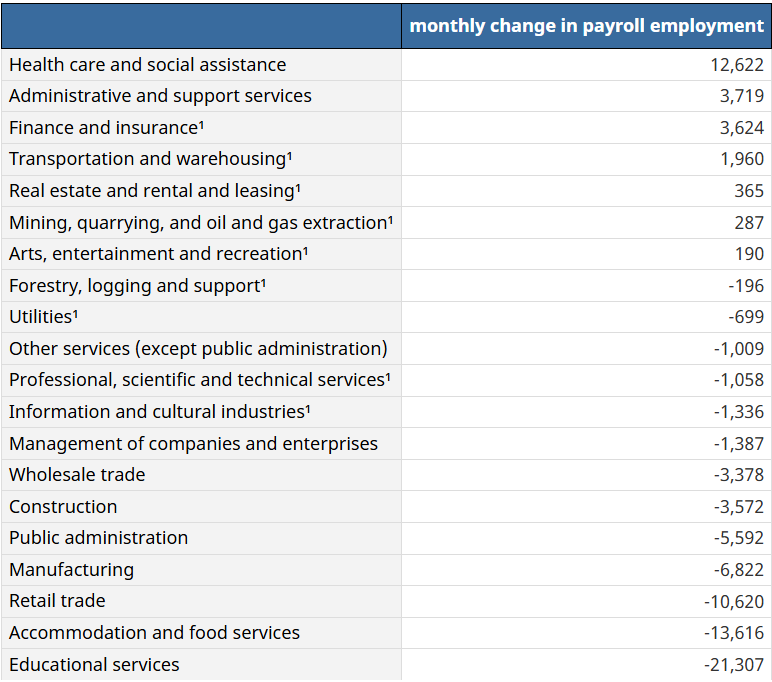
Which sectors recorded the biggest job gains?

Payroll employment in Canada declined by 49,000 jobs (-0.3%) in February 2025, following a gain of 14,400 (+0.1%) in January, according to Statistics Canada (StatCan).
Payroll jobs refers to the number of employees who receive pay and benefits from their employer, as measured by the Survey of Employment, Payrolls and Hours (SEPH).
Employment in Canada rose by 76,000 (+0.4%) in January 2025, marking the third consecutive month of job gains, according to a previous Indeed report.
Meanwhile, in February, there were 528,000 job vacancies in Canada, marking the sixth consecutive month of little change. On a year-over-year basis, job vacancies were down by 131,100 (-19.9%).
The job vacancy rate was 2.9%, unchanged from the previous month but down by 0.8 percentage points from February 2024 (3.7%).
Among the sectors, educational services, accommodation and food services, and retail trade recorded the largest declines in payroll employment.
Meanwhile, health care and social assistance led the way among the seven sectors that reported job gains.
 “There were 2.8 unemployed persons for every job vacancy in February 2025, up from 2.0 in February 2024. The unemployment-to-job vacancy ratio has held steady since August 2024, at 2.8, except in November 2024 and January 2025, when the ratio was 2.9,” said StatCan.
“There were 2.8 unemployed persons for every job vacancy in February 2025, up from 2.0 in February 2024. The unemployment-to-job vacancy ratio has held steady since August 2024, at 2.8, except in November 2024 and January 2025, when the ratio was 2.9,” said StatCan.
The top six sectors with the most job vacancies in February were:
The sectors with the highest job vacancy rates in February were:
Meanwhile, the lowest such rates were in:
Job volumes for white-collar roles across the world's leading companies went up by 54% in January 2025, according to Robert Walters.
On a year-over-year basis, average weekly earnings in Canada were up 5.4% to $1,298 in February, following a 5.6% increase in January, according to StatCan.
“In general, growth in average weekly earnings can reflect a range of factors, including changes in wages, composition of employment, hours worked and base-year effects,” the government agency said.
Average weekly hours in February (33.5 hours) were unchanged on a month-over-month and year-over-year basis.
Among sectors, the highest average weekly earnings were highest in the following:
Here’s the corresponding numbers for Candians provinces and territories:
Overall, 74% of Canadians worry they’re not saving enough, according to a previous H&R Block Canada report.